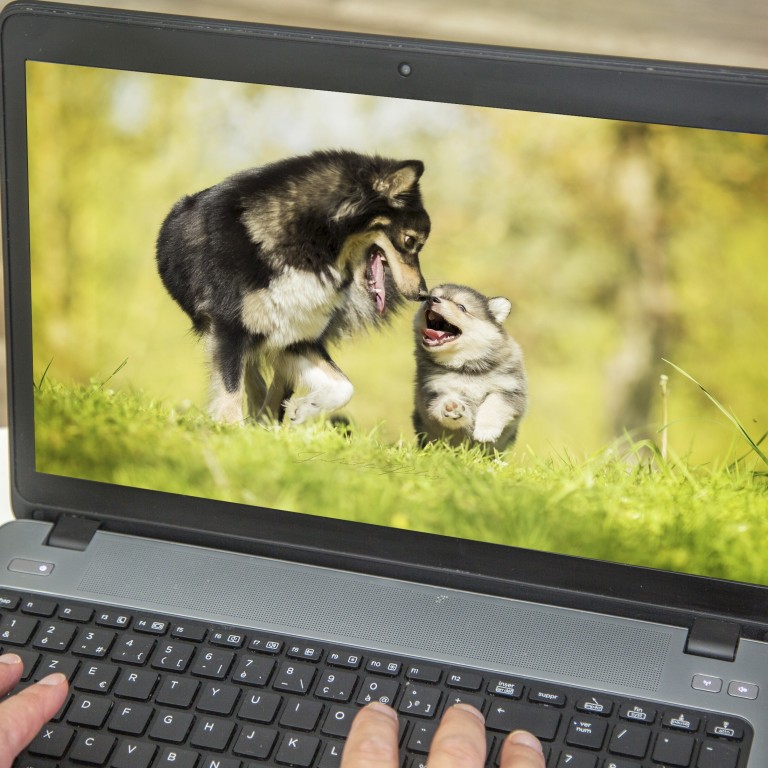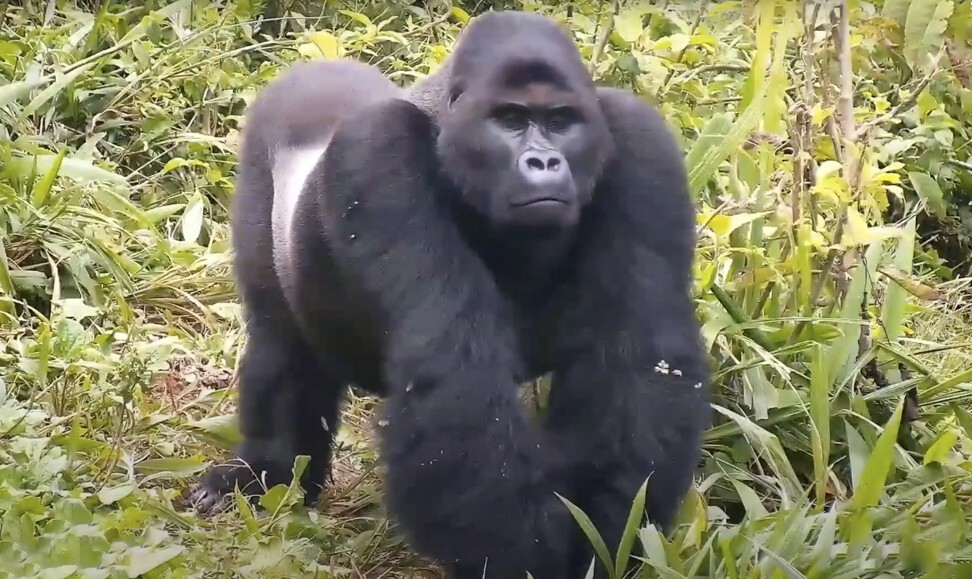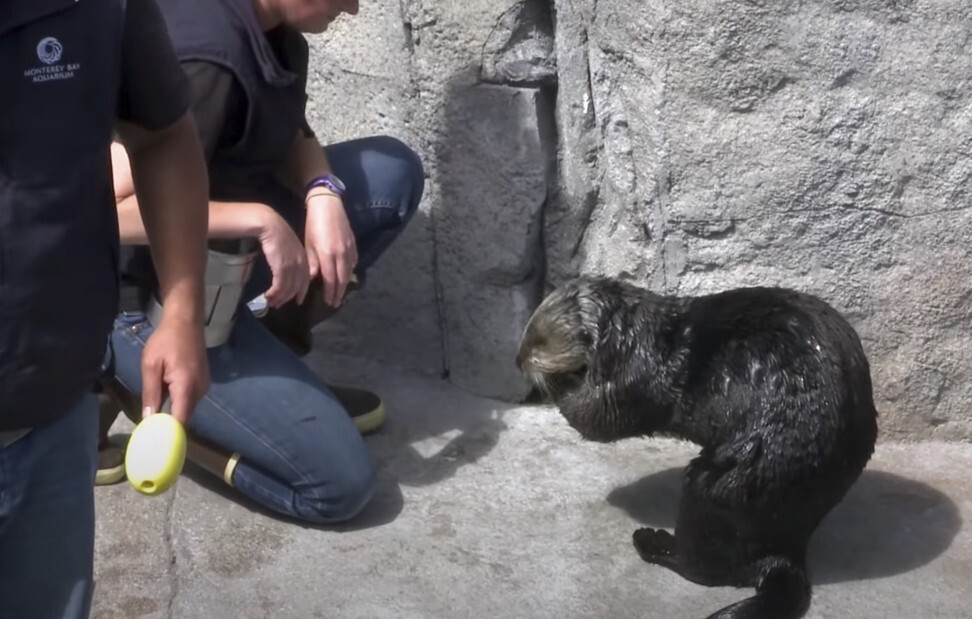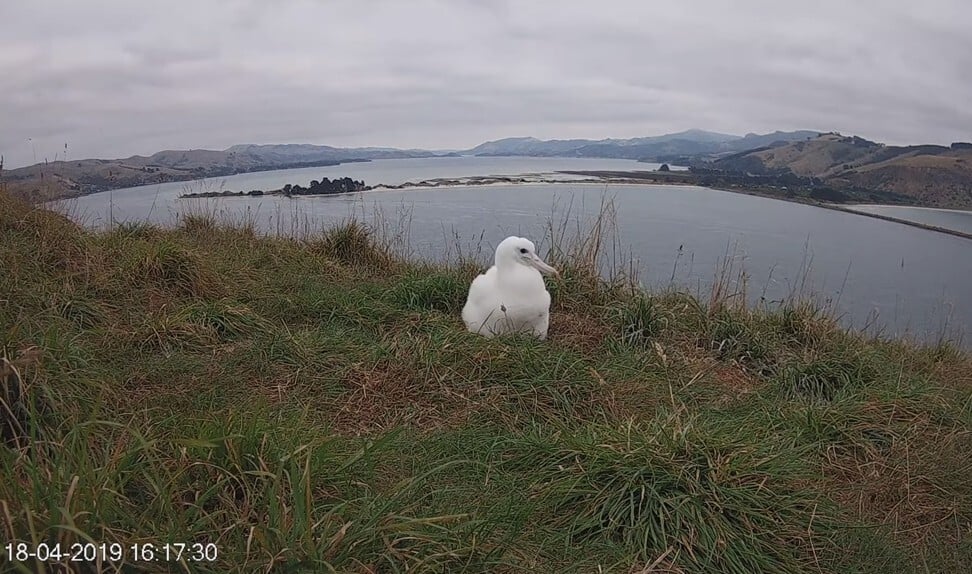
The best animal cams to watch during lockdown, and why cat and dog videos are good for your stress levels
- Watching clips of cute creatures can reduce anxiety, a study has found – which might explain why we’re tuning in to so many animal cams during the pandemic
- A popular feed from a koala sanctuary features the creatures cuddling on a log, while thousands of people are eating breakfast with sea otters at a US aquarium
Have you ever fallen down a rabbit hole of endlessly scrolling through cute dog videos or clips of fluffy, adorable kittens on the internet, and felt guilty about doing so?
Don’t – it turns out there’s a rationale behind the addiction. A new study has found that watching such videos can lower your heart rate, blood pressure and anxiety.
The results, released a few weeks ago, were illuminating. After 30 minutes, the students’ heart rates dropped by an average of 6.65 per cent, blood pressure dropped by about 15 per cent and anxiety levels fell by an average of 35 per cent (and by as much as 50 per cent in some cases).

“Heart rates and blood pressure fell across all individuals to a level that would be considered healthy and indicative of limited stress or anxiety,” said Dr Andrea Utley, of the university’s school of biomedical sciences.
“It would appear that animals are able to reduce stress and anxiety in humans. It would appear that images appeal but video clips are more meaningful, and I would therefore expect that physical closeness would be even better.”

Other studies have reached similar conclusions. In 2012, researchers at Japan’s Hiroshima University concluded that kawaii (“cute” in Japanese) animals not only made people happier but also improved behaviour and focus.
In 2017, a study by the University of California, Berkeley in the United States and BBC Earth (the British Broadcasting Company’s global factual brand) found that the viewing of nature clips ratcheted up joy and amazement, and reduced stress, anger and tiredness.

The most watched feed from the Lone Pine Koala Sanctuary, a refuge for sick, injured and orphaned animals near Brisbane, in Australia’s Queensland, is the one aimed at a “cuddle train” – a log on which koalas snuggle together in a line on chilly mornings.
Spokeswoman Amy Swinn said the feed became such a big hit between the end of March and mid-June that coverage was expanded to include other animals at the sanctuary.
“Viewers were able to ask all of their animal questions, no matter how weird or wonderful they might be. Our live-streams have covered everything from feeding baby koalas to training our beautiful barn owls for flight.
The live element adds the same degree of excitement and surprise of a safari. It is placid most of the time, but you do get to see some incredible moments.
“Just recently, viewers were able to join us on a morning walk with one of our wombats, Bella, which was a lot of fun and not something you get to see every day,” Swinn said.
Equally adorable are the orphaned animals at the Gorilla Rehabilitation and Conservation Education Centre programme in the Democratic Republic of Congo’s North Kivu province. The gentle giants are soothing to watch, and their clowning around can prove hilarious.

Marine creatures have also been popular with virtual visitors during the pandemic. Monterey Bay Aquarium, in California, has some of the world’s most watched feeds, its 10 webcams having been focused on jellyfish, sharks, sea otters, penguins, kelp forests, open sea and coral reefs.
Since closing its doors in March, the site has had 7 million visits and more than 28 million page views. From mid-March to April, it received four times the number of viewers it had seen in the same period last year.
“People watch religiously,” said the aquarium’s director of digital strategy, Dana Allen-Greil. “They email us and say, ‘I eat breakfast every morning with the sea otters’. It becomes a part of their daily life.”

The aquarium has rolled out programmes using the webcams that include guided meditation sessions, called Morning MeditOceans, the feeding of marine creatures and live chat. Otters Abby, Ivy, Selka, Kit and Rosa have, according to the aquarium’s blog, proved a hit with the pandemic-fighting epidemiologists at the Vanderbilt University Medical Centre in the US state of Tennessee.
On the Otago Peninsula, towards the southern tip of New Zealand’s South Island, is the Royal Albatross Centre (RAC). The northern royal albatross colony here is the only one in the world on a mainland. The albatross is one of the largest seabirds in the world, with wingspans of up to three metres (9.8 feet), and has been badly affected by changes to habitat and climate, and by fishing practices.
An RAC camera focuses on one breeding pair at a time as they raise a chick. “The feed runs 24/7, all year round, since there is activity for basically the entire year,” said New Zealand department of conservation ranger Sharyn Broni, who has worked at the centre for more than 20 years.

“Adult birds start arriving for breeding in October and the process of pairing up, building a nest, laying and incubating eggs, and raising chicks until they are ready to fledge [to grow the feathers necessary to fly] can take until September.” Broni said viewership went up by more than 20 per cent once lockdowns began around the world.
National Geographic’s live safari feeds from all over the world are unscripted and unpredictable, as are those beamed out by South African broadcaster WildEarth – of which Vamsi Vanka is a fan.
“I haven’t been able to travel [to wildlife destinations], so the next best thing is to be able to virtually travel,” says the marketing technology professional based in Kuala Lumpur, Malaysia. “The live element adds the same degree of excitement and surprise of a safari. It is placid most of the time, but you do get to see some incredible moments.
“I love the forest and the way different species live together, the unexpected interdependencies between species – right from worms and insects to the biggest predators. It is educational.”

